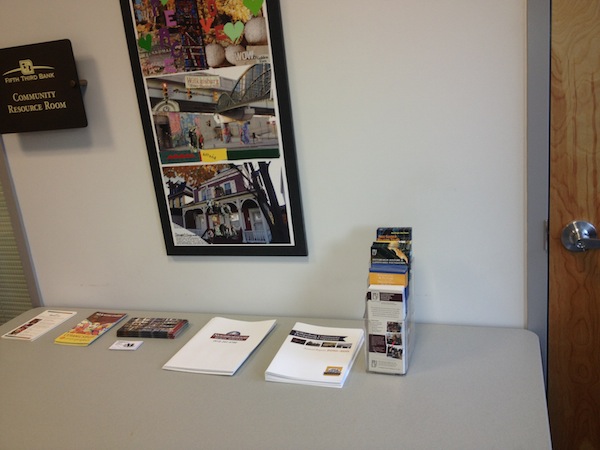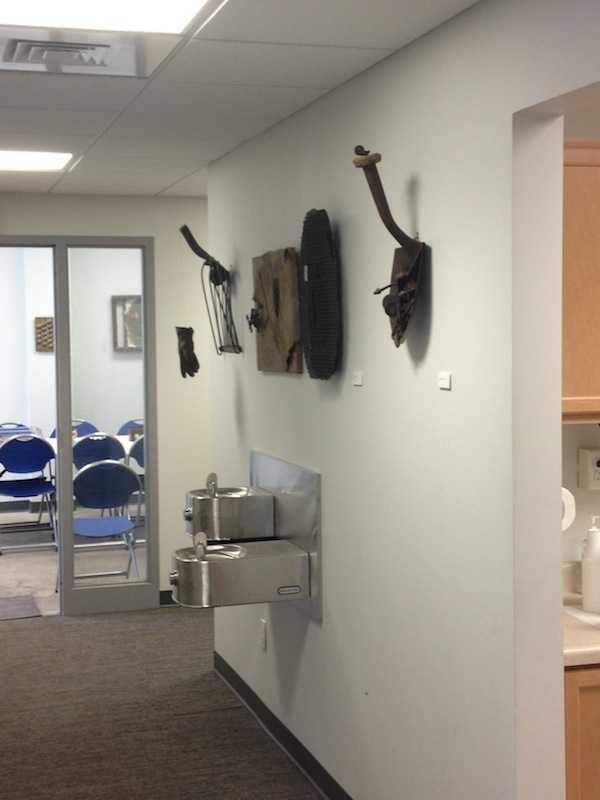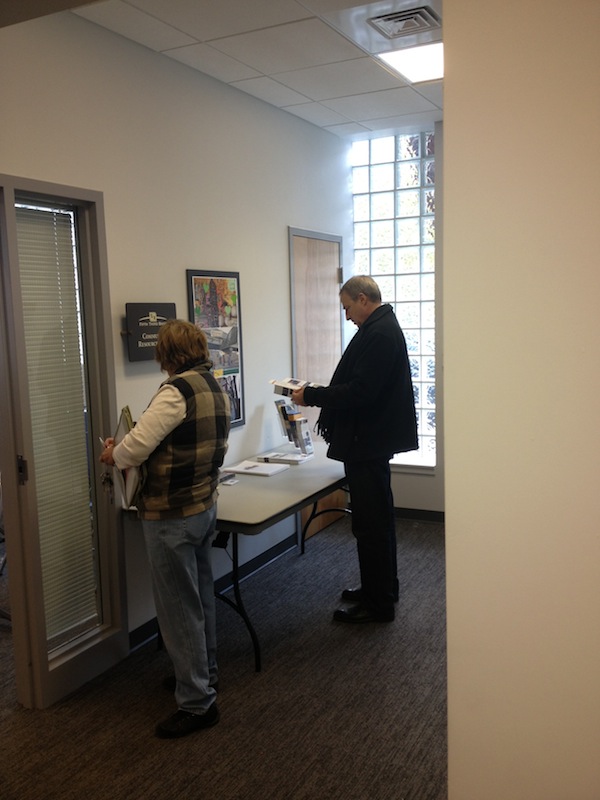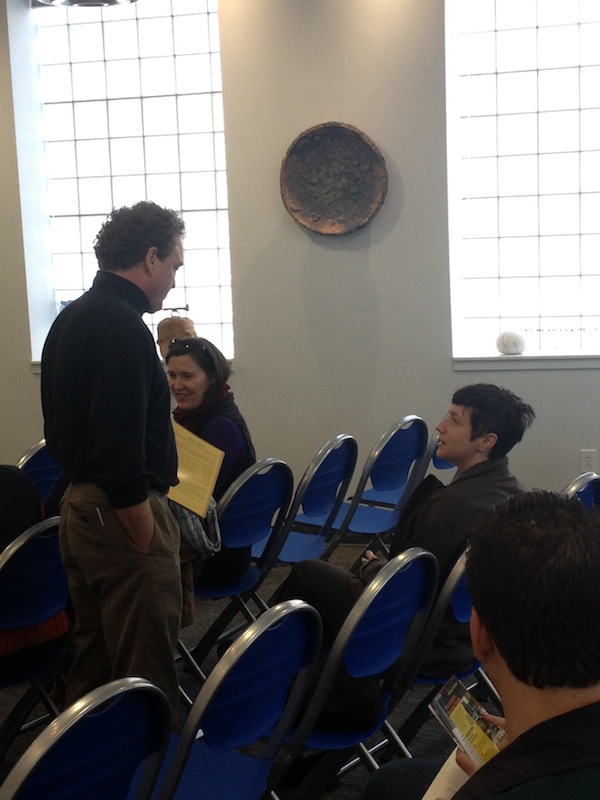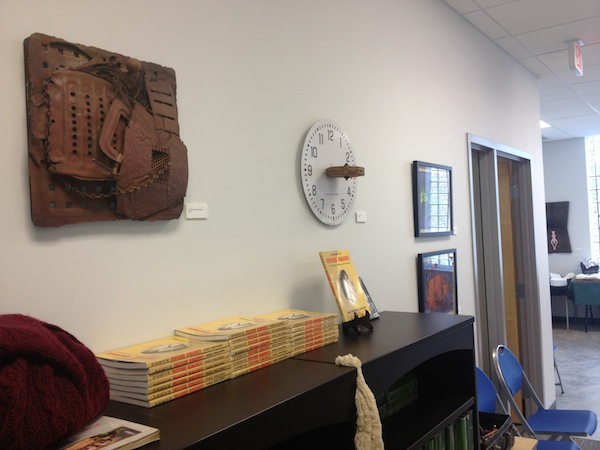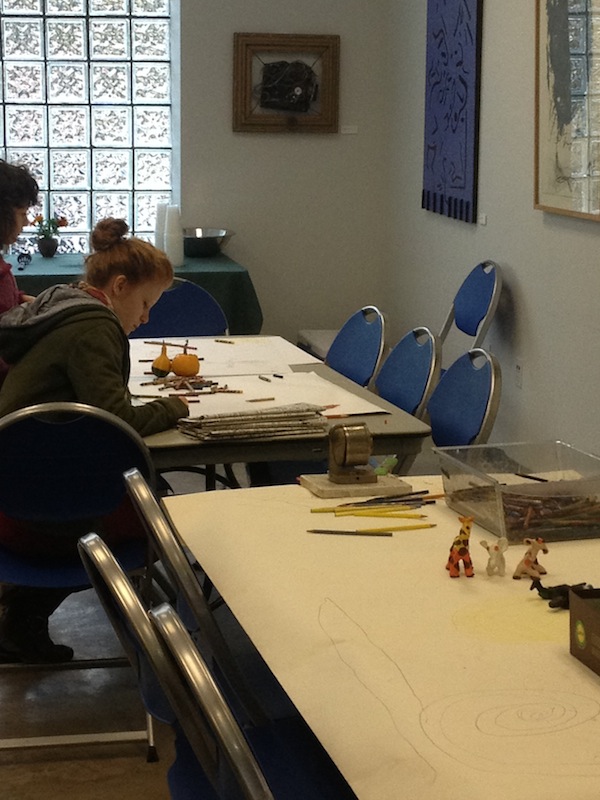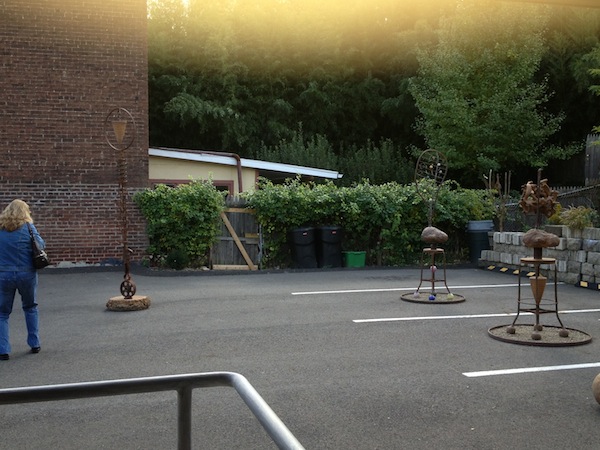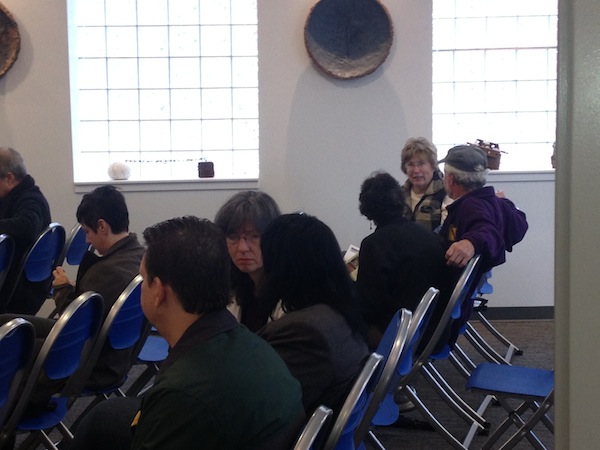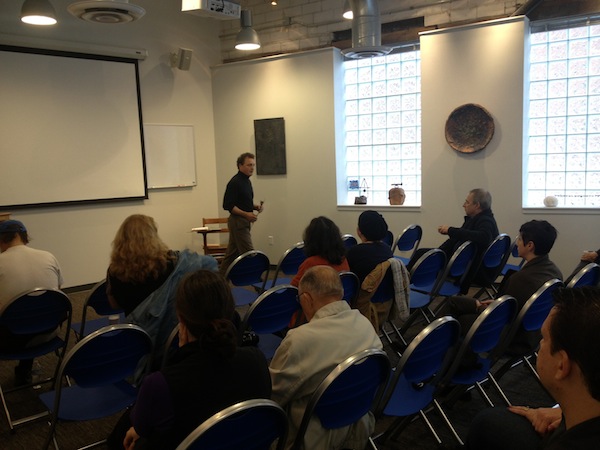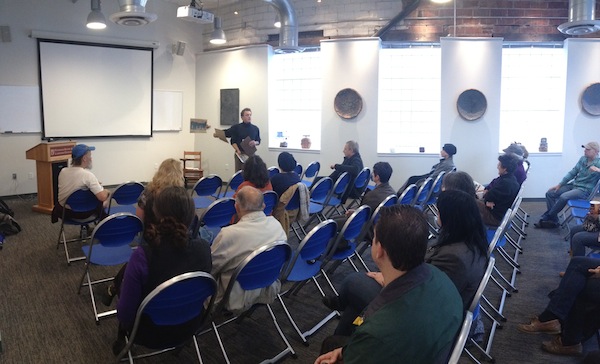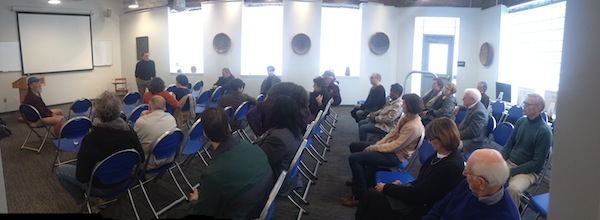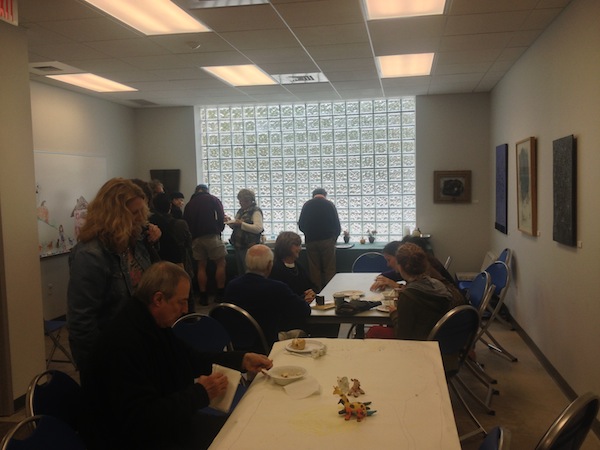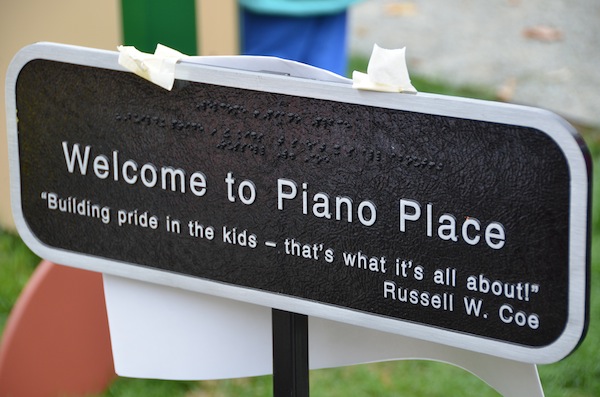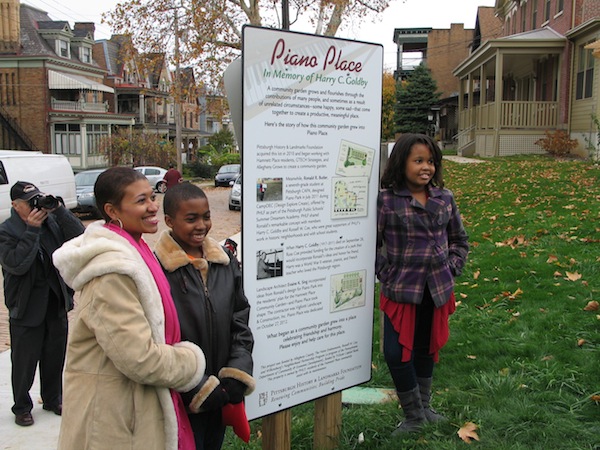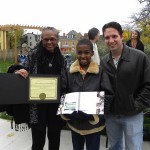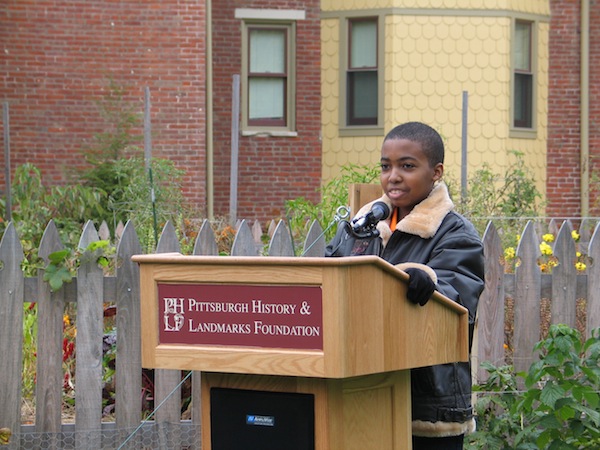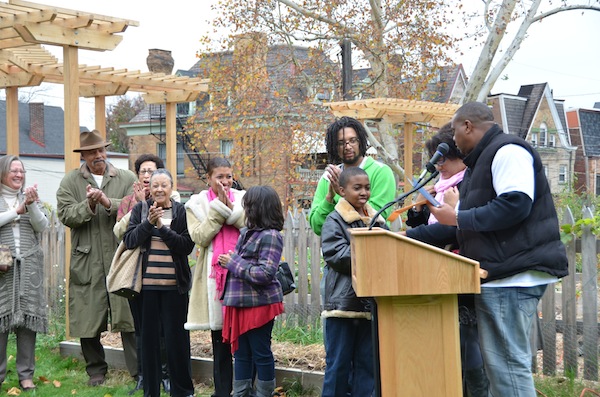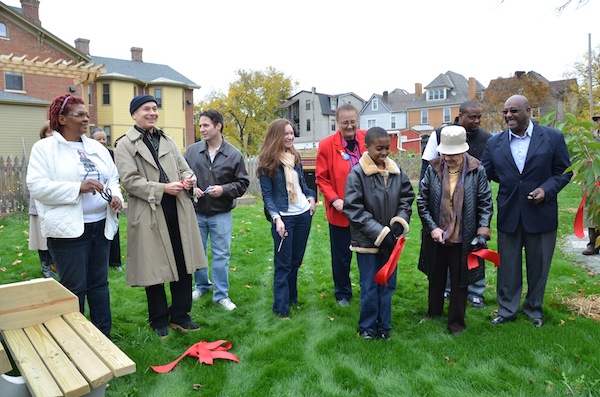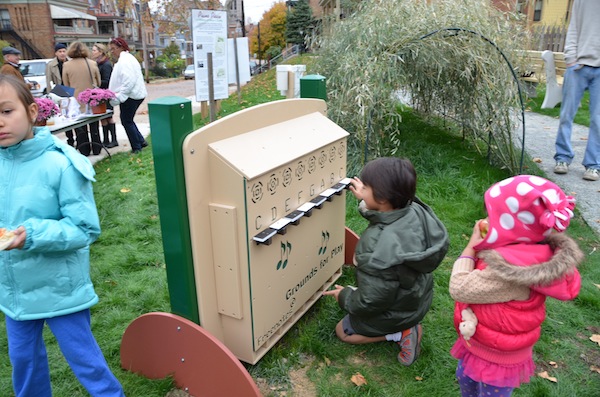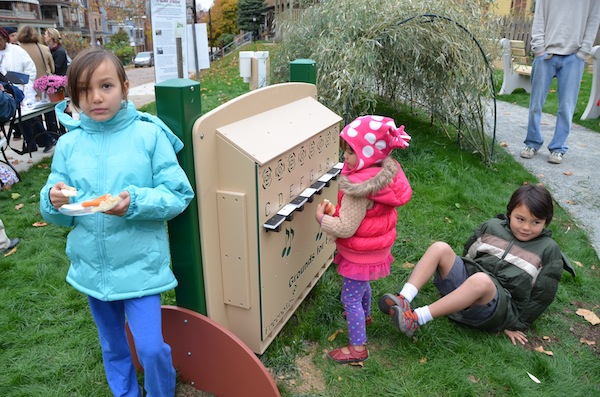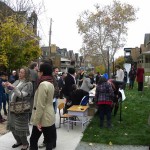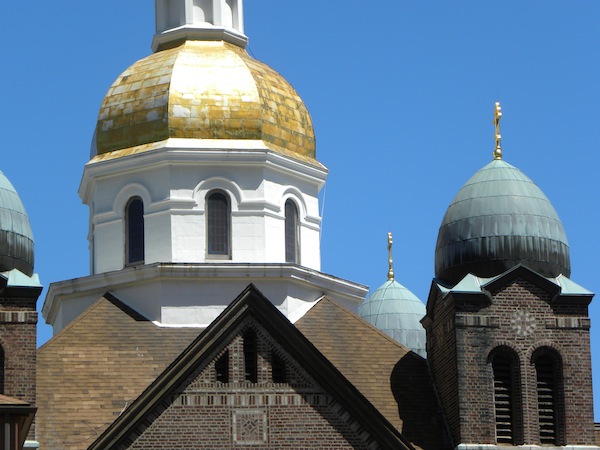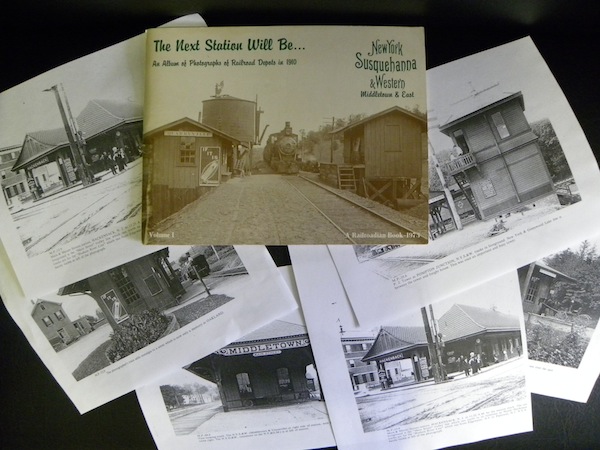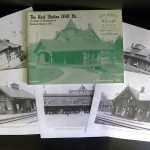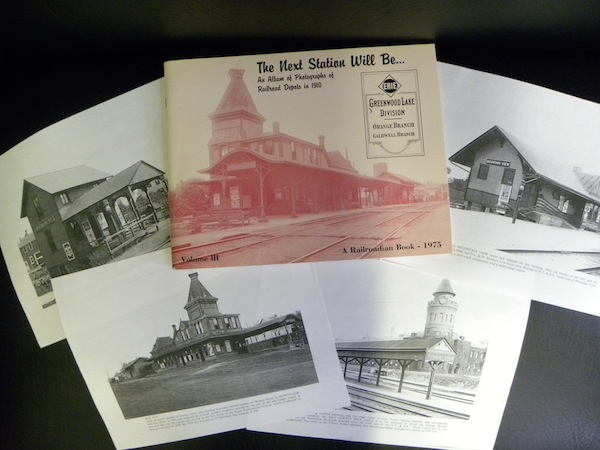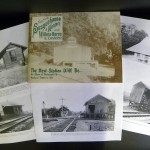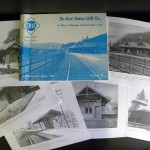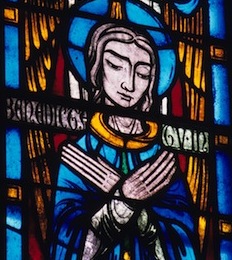
Latest News
-
Landmarks Housing Resource Center Open House and Shipman Gallery Exhibit
The Landmarks Housing Resource Center (LHRC), located at 744 Rebecca Avenue, Wilkinsburg, hosted an Open House/Art Exhibit by artist James Shipman on Saturday, October 20. The event, which lasted from 10:00 a.m. to 2:00 p.m., saw a total of 40 attendees from Wilkinsburg, Regent Square, Point Breeze, Highland Park, Sewickley, the West End and Oakmont.
Mr. Shipman, an artist, sculptor and ceramist, gave a presentation titled: “The Role of the Artist in Society,” in the context of community development, and in particular with regard to the ongoing and comprehensive effort of PHLF’s work in the Hamnett Place neighborhood.
After a question and answer session, the audience was invited to walk around the space, getting a chance to see Mr. Shipman’s work exhibited on the walls of the LHRC. In addition, the public was invited into Mr. Shipman’s workspace, which occupies half of the building that houses the LHRC.
The Landmarks Housing Resource Center offers workshops and seminars on home ownership, restoration, Do-It-Yourself work, cost-effective tips on green initiatives, and discussions on neighborhood and community development. For more information about the LHRC and its monthly programming, please call 412-471-5808 or visit www.landmarkshousingresource.org.
-
PHLF Completes Transformation of Two Vacant Lots In Wilkinsburg
On October 27 in Wilkinsburg, a group of Hamnett Place neighborhood residents, PHLF staffers, borough and civic leaders, members of the Butler and Goldby families and friends of Russ Coe, gathered on Jeanette Street to celebrate the transformation of two key pieces of vacant land, creating a healthy urban community garden on one (Piano Place) and a clean and beautified green space on another (Mulberry Corner).
The ceremony, highlighted by a ribbon cutting at the dedication of Piano Place/Hamnett Place Community Garden, marked a significant accomplishment for PHLF’s Vacant Lot Program, an essential aspect of its work in Wilkinsburg through the Neighborhood Partnership Program (NPP) of the Pennsylvania Department of Community and Economic Development.
PHLF acquired what was a vacant lot— an 8,629-square-foot piece of land at 502-504 Jeanette Street— in 2010 and began working with Hamnett Place residents, GTECH Strategies and the Allegheny Grows program of Allegheny County Economic Development to transform it into a community garden.
At the corner of Mulberry and Rebecca Avenue, adjacent to the fully restored Crescent Apartment Building, PHLF acquired three vacant lots in 2010. They have been transformed into Mulberry Corner, a beautifully designed and landscaped green space that is located at the gateway into the Hamnett Place neighborhood.
Both projects were funded and supported by the collaboration of a group of stakeholders including an important PHLF private donor, the Heinz Endowments, Allegheny County, and NPP funding from TriState Capital Bank.
During the celebration, held on October 27, however, Ronald R. Butler, a student at the Pittsburgh School for the Creative and Performing Arts, was hailed by community members and civic leaders for his visionary design of Piano Place, as a clean and green oasis for community gardeners and area children.
Pittsburgh Public Schools Superintendent Dr. Linda Lane commended young Ronald for his project design, which he conceived during PHLF’s CampDEC (Design Explore Create) in July 2011, which was offered as part of the PPS Summer Dreamers Academy.
Wilkinsburg Mayor John Thompson celebrated the occasion as yet another milestone in the ongoing efforts in restoring and beautifying neighborhoods in Wilkinsburg. Meanwhile, Ed Gainey, a candidate for the State House of Representatives, read a proclamation on behalf of Allegheny County Executive Rich Fitzgerald.
PHLF thanks Whole Foods for providing platters of fresh vegetables, pita bread, and dips for the occasion.
-
Lecture, Tour, and Dinner at The Duquesne Club
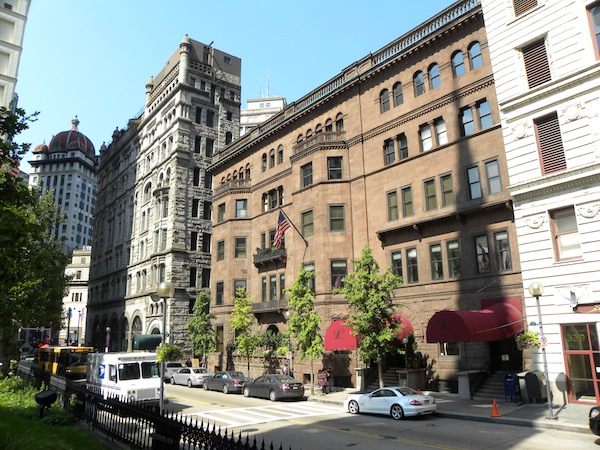 Wednesday evening, February 6, 2013
Wednesday evening, February 6, 2013
The Duquesne Club
325 Sixth Avenue, Pittsburgh, PA 15222PHLF’s popular tradition of featuring the most elegant private regional clubs will continue in 2013. Join us in the new year for a lecture, tour, and dinner at The Duquesne Club (Longfellow, Alden & Harlow, 1889; Alden & Harlow, 1902; Janssen & Cocken, 1931). The Duquesne Club has a legendary history of being host to Pittsburgh’s captains of industry. The downtown Pittsburgh landmark is listed on the National Register of Historic Places and houses an impressive art collection.
Following a cash bar (beginning at 5:15 p.m.), PHLF Trustee and Architect David Vater will present an illustrated lecture, “The Duquesne Club’s Architecture and History,” at 6:00 p.m. Docents of the Art Society of The Duquesne Club will then lead guided tours of the club and art collection, followed by dinner in the Main Dining Room at 7:30 p.m.
David Vater’s lectures and tours for PHLF have provided an informed and revealing view of the most elegant private clubs of the Pittsburgh region, including Longue Vue Club, Fox Chapel Golf Club, Edgewood Club, Twentieth Century Club, Pittsburgh Athletic Association, and the Allegheny HYP Club.
David received his degree in architecture from the University of Kentucky and also studied at the Preservation Institute on Nantucket Island. He has served on the Board of Directors for AIA Pittsburgh’s Foundation for Architecture, The Society for the Preservation of the Duquesne Heights Incline, the Friends of Carnegie Library of Pittsburgh, and Chatham Village Homes, Inc.
Event Details
- $80: Members of PHLF
- $105 Non-members of PHLF (includes complimentary one-year membership in PHLF)
- For PHLF member reservations: please contact Mary Lu Denny or 412-471-5808, ext. 527
- For Duquesne Club member reservations: please contact Heather Semple at 412-560-3233.
- Parking: $5 at Smithfield Liberty Garage after 4:00 p.m. The sixth floor of the garage has direct access to the fourth floor of The Duquesne Club. Or, the Mellon Square Garage is one block from the Club (also $5 after 4:00 p.m.).
-
Your Gift to PHLF’s HRP Program Ensures Its Success
Thank you for your generous matching grant. Your gift helps preserve our historic religious property and the heritage it represents. We could not have done this without your support.
––St. John the Baptist Ukrainian Catholic Church, Southside
Please help us reach our goal of raising $75,000 in support of PHLF’s Historic Religious Properties (HRP) program by making a cash contribution or a planned gift by the end of this year. Your support of this program is critical and determines the number of grants PHLF is able to award in 2013. PHLF has received 51 donations this year totaling $22,290.00. With the help of many more people, we will reach our goal.
- For a cash gift, please click here to make a tax-deductible donation. Go to “Contribute” on the home page; select the amount of your gift; and direct it to Historic Religious Properties.
- Planned giving: There are other ways to make a gift that will not only help us in 2013, but could maximize your tax benefits. For example, when you donate appreciated stocks, bonds, or mutual fund shares, you get the same tax deduction as if you had given cash. That’s because your deduction for these forms of gifts is based on their market value, and you incur no capital gains liability on the transfer to us. It’s one of the best tax incentives left, and we can work with your broker to make a gift of securities simple.
To learn more about the advantages of making gifts of appreciated assets to support our HRP Program, visit:http://plannedgifts.phlf.org/wisely.php or contact our planned giving office at plannedgiving@phlf.org or 412-471-5808, ext. 538. Other creative giving ideas can also be found at plannedgifts@phlf.org.
PHLF’s matching grant program is the only place most historic religious properties can turn to for help in making critical exterior repairs to their buildings. By encouraging careful, informed, and economical stewardship, PHLF helps ensure that these architecturally significant places of worship will be taken care of for future generations.
Whichever way you choose to support the HRP program, please remember that your gift is leveraged. “Each grant from PHLF is matched by the congregation, making donations from our members and friends even more valuable,” said Mr. Dorman. Whether you choose to support the HRP program or another important PHLF project or program, thank you for helping to make possible our many preservation successes.
-
Fairbanks Feature: The Next Station Will Be . . . (one in a series of three)
James D. Van Trump Library | Frank B. Fairbanks Transportation Archive | Fairbanks Features
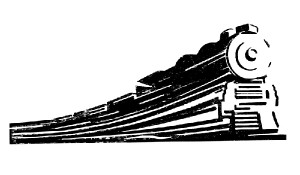 Showcasing a variety of materials located in the Frank B. Fairbanks Rail Transportation Archive
Showcasing a variety of materials located in the Frank B. Fairbanks Rail Transportation ArchiveNo. 15 Presentation
Fairbanks Feature: The Next Station Will Be . . . (one in a series of three)
The original collection of books given by Frank B. Fairbanks for the Rail Transportation Archive here at PHLF included eight first-edition copies in the soft-bound series, The Next Station Will Be . . . , published by The Railroadians of America, Inc. The organization was founded in 1939 for a limited membership––for those whose avocation was the study of railroading. This series of books, now completed (consisting of 13 books published from 1973 to 1984), is part of the Fairbanks Rail Transportation Archive.
The Railroadians of America publish many books, both hard and soft cover––and many of their books are housed in the Archive. Their coverage is trolleys, electric trains, and railroad lines. For the purpose of this article, only this series of 13 books is being referenced. The following three excerpts, from Volume 1, page 1 of The Next Station Will Be . . . , describe how the series came to be:
“In 1908, an Erie Railroad official decided it would be valuable to record in photographic detail the station buildings of his and associated lines. Accordingly J. E. Bailey of Meadville, Pa., was delegated the task, and from 1909 to about 1911, did the job painstakingly. . . .
“No matter how unpretentious or shack-like the station, the photographer shot at least one view of each of its sides. A plat of the station and track accompanied each set of photos. Mr. Bailey’s glass negatives evidently served their purpose and, through changes in the world and the railroad industry that could not have been imagined in ‘the confident years,’ seem to have been forgotten.”
Sometime in the 1960s, about five hundred of these glass plate negatives were discovered.
“While there were obvious gaps in the collection, some fine material was uncovered and the directors of the Railroadians decided to issue a number of albums to make this find available.”
Each book gives a brief history, up-to-date merger information, or name changes of the lines. Each photograph has a brief description of the station and area. A timetable for the rail line in 1909 is also included in the books.
These books are a real treasure trove, and we are fortunate to have the complete set for the use of the Archive patron. The missing issues were purchased by funds from Archive supporters. A list of the book titles follows. Each Volume number and title is preceded by the phrase The Next Station Will Be . . . An Album of Photographs of Railroad Depots in 1910.
This series of thirteen books will be highlighted in the next three articles of A New Train of Thought. The article for Volume VII will be separate. One photograph in that booklet gives reference to a tragic story that will be told in the third of the series of articles.
No. 15 Presentation (photos from these books are shown below):
- Book 1: New York Susquehanna & Western Middletown & East
- Book 2: New Jersey & New York Railroad, service between New York City and Haverstraw
- Book 3: Erie RR ––Greenwood Lake Division/Orange Branch/Caldwell Branch
- Book 4: Erie RR ––Northern Railroad of New Jersey and Piermont Branch
- Book 5: New York Susquehanna & Western and Wilkes-Barre & Eastern
- Book 6: Erie RR/New York/Port Jervis
No. 16 Presentation (to be posted at a later date)
- Book 8: Erie RR/Susquehanna, PA to Salamanca, NY
- Book 9: Erie RR/Salamanca, NY to Marion, Ohio
- Book 10: Erie RR/Marion Division, Marion, Ohio to Chicago
- Book 11: Erie RR/Erie Branches from Jersey City, NJ to Rochester, NY
- Book 12: Pennsylvania RR/New Jersey Central/and New York & Long Branch RR
- Book 13: Erie RR/Buffalo Division/Bradford Division/Dunkirk Branch
No. 17 Presentation (to be posted at a later date)
- Book 7: Erie RR/Port Jervis/Susquehanna/Scranton
The following photos show some pages from the first six volumes.
- Vol. 1: Sample photographs of Beaver Lake Station, Oakland Station, Middletown Station, Hackensack and Pompton Junction Stations
- Vol. 2: Sample photographs of Erie RR Ferry Service, Park Ridge, Hillsdale, Woodridge, and Carlstadt
- Vol. 3: Sample photographs of Forest Hill, Orchard Street, Montclair and Mountain View
- Vol. 4: Sample photographs of Tenafly, Palisades Park, Ridgefield, Piermont and Homestead
- Vol. 5: Sample photographs of Tannersville, Halsey, Stroudsburg, Langon, and Sparta Junction
- Vol. 6: Sample photographs of Arden, Suffern, Prospect Street, Tuxedo, Passaic Park, and Glen Rock
The Frank B. Fairbanks Rail Transportation Archive is open by appointment on Mondays, from 10:00 a.m. to 5:00 p.m. Use of the archive is free to PHLF members (one of the benefits!); non-members are assessed a $10 use fee.
The Archive is located on the fourth floor of The Landmarks Building at Station Square, in the offices of the Pittsburgh History & Landmarks Foundation.
To schedule an appointment, email the Librarian James Halttunen: James@phlf.org
-
PHLF and Benchmarking Historic Preservation
Dear friends,
Over the past few months, I have conducted a multi-part conversation with you about the journey Pittsburgh History & Landmarks Foundation (PHLF) has made in its effort to create livable environments for the residents of our communities. In this edition, I would like to share with you the results of a survey research project we conducted in partnership with a local university, and that was funded by a locally-headquartered financial institution.
Last year, we launched the Landmarks Fellowship Program, a partnership of Landmarks Community Capital Corporation and Carnegie Mellon University’s Heinz College of Public Policy and Management––with generous funding from the PNC Foundation––that resulted in five Heinz College students joining us for the academic year.
As part of the program, we requested the student team to perform a benchmark study comparing PHLF with leading preservation organizations from around the United States. This project was not a scientific study, but it included quantitative and qualitative analyses that PHLF utilizes in its own self-assessment regarding its work and effectiveness. We began our project by collecting data from the National Trust for Historic Preservation’s annual Partners Survey for 2011. Based on our review of that data, we developed a survey that was sent to 151 preservation organizations throughout the United States and Canada. We analyzed additional data from annual reports and web sites of 35 more preservation organizations.
We learned many things about how our efforts measure up to work performed by comparable organizations. Here are the highlights:
- PHLF’s capabilities in real estate development and in planned giving are almost unequalled. In addition, PHLF remains a leader in community development, advocacy, education, and lending, to name just a few.
- 50 percent of organizations responding to the survey reported that advocacy, education, and tours were their best-funded programs, and that “bricks and mortar projects” and real estate development fell to the lower end of their activity list. PHLF differs in that our prioritization allows us to do all of these and still maintain a high emphasis on preservation-related real estate development projects that matter.
- Our survey reveals that many of our peer organizations wish to expand their operational capacity to include many of the capabilities we possess. For instance, when asked about the key areas where they most wanted to improve their organizational reach, 28 percent of our peers said they were interested in creating a grants and technical assistance program; 24 percent would like to start doing real estate development, and 21 percent said planned giving would be a crucial program they would like to launch—all areas in which we not only excel, but have achieved meaningful and consistent results for many years.
- We stand out in the membership arena as well. We learned that PHLF has twice the number of dues-paying members compared to our peers in 2011. Interestingly, we also learned membership contributions make up markedly less of our budget as compared to our peers. Our ability to fund activities from grants, loans and judicious use of investment funds sets us apart.
- Meanwhile, almost 75 percent of responding organizations said they had an approximate annual budget of between $50,000 and $750,000 in 2010. Again, we stand out with an annual budget of approximately $3.3 million.
- On fundraising, events and annual campaigns were listed as the two most important ways of generating revenue by almost half the respondents. At PHLF, however, we depend on funding the projects themselves and using collected reserves for general operations.
- Although most of the organizations surveyed desire to be in real estate development, few have done so. As many of you know, it is through that effort that we have been able to build reserves that pay for many of our general operations so that we do not have to use trustee and staff time for annual general operational fundraising. We raise money for projects because people prefer to give to something specific. We have one of the most creative educational programs, serving more than 10,000 people each year.
We are heartened by the findings of the survey conducted by our Heinz College project team. In almost every category, PHLF ranked as one of the leading preservation organizations in the United States.
Every day I feel our need for greater resources, greater knowledge and more significant influence to meet the preservation challenges our organization faces. But when I look at the results of surveys like that performed by the Heinz College Team, I feel heartened that Pittsburgh History & Landmarks Foundation is doing so very well.
Let me know of your thoughts and opinions about these survey results. Thanks again to the many members and friends who have shared their comments with me. In particular, thanks for your continuing support of PHLF; without your support, we cannot do all that we do.
Arthur Ziegler
President
Pittsburgh History & Landmarks Foundation -
PHLF Advocacy Updates
Historic Review Commission, Local Designations, and Other City Issues
October HRC Meeting. The next meeting of the Historic Review Commission (HRC) will be held on October 3, 2012 at 1:00 p.m. in the First Floor Hearing Room of 200 Ross Street. The agenda is available here.
Public comments on the proposed listings of the Schenley Farms Historic District (Boundary Increase) and the John A. Brashear House and Factory to the National Register of Historic Places (National Register) will be solicited after the adjournment of the HRC meeting.
National Register Nominations
New Listings. On September 4, 2012, the National Parks Service listed the Ursuline Young Ladies Academy, located at 201 S. Winebiddle Street in Bloomfield, on the National Register. The Second Empire mansion (c. 1860s) was originally built for Henry Lynch, was used as a convent and school after 1893, and is now the Waldorf School of Pittsburgh. The mansion is the center of a group of buildings that includes a chapel, gymnasium and sisters’ residence—all designed by Carlton Strong in 1913. The mansion was designated a City of Pittsburgh Historic Structure on August 20, 1982 and received a PHLF Historic Landmark Plaque in 1984.
PHLF’s Downtown Districts Project. On September 28, 2012, PHLF submitted to the Pennsylvania Historical & Museum Commission (PHMC) the final nomination materials for the Pittsburgh Renaissance Historic District and the amendment materials to expand the boundaries and update the inventories of the following National Register-listed districts: Firstside, Fourth Avenue and Pittsburgh Central Downtown Historic Districts. PHMC’s Preservation Board is expected to review the nominations in February 2013.
The project will result in 100 new resources on the National Register, making them eligible for three tax benefits: the federal 20% rehabilitation tax credit; a federal tax deduction for a preservation easement donation; and the new state historic tax credit. These preservation tax incentives encourage private investment in historic buildings and were used in Downtown Pittsburgh projects including Market at Fifth, Market Square Place, the Carlyle Condominiums, and others. PHLF is completing this project thanks to a $25,000 grant from PHMC. (For more information, see “Historic Designations in Pittsburgh: A Primer.”
-
Please Give This Month to PHLF’s HRP Program
When we think about October, we think about tricks and treats. We are also reminded at PHLF that making a gift now to support the historic religious properties in Allegheny County could help avoid the tricky problems associated with the neglect and decay of important religious properties. That’s why your support is so important to the success of PHLF’s annual appeal.
Please help us reach our goal of raising $75,000 in support of PHLF’s Historic Religious Properties (HRP) program by making a cash contribution or a planned gift.
- For a cash gift, please click here to make a tax-deductible donation. Go to “Contribute” on the home page; select the amount of your gift; and direct it to Historic Religious Properties.
- Planned giving: There are other ways to make a gift that will not only help us in 2013, but could maximize your tax benefits. For example, when you donate appreciated stocks, bonds, or mutual fund shares, you get the same tax deduction as if you had given cash. That’s because your deduction is based on their market value, so you incur no capital gains liability on the transfer to us. It’s one of the best tax incentives left, and we can work with your broker to make a gift of securities simple.
To learn more about the advantages of making gifts of appreciated assets to support our HRP Program, visit:http://plannedgifts.phlf.org/wisely.php or contact our planned giving office at plannedgiving@phlf.org or 412-471-5808, ext. 538. Other creative giving ideas can also be found at plannedgifts@phlf.org.
PHLF’s matching grant program is the only place most historic religious properties can turn to for help in making critical exterior repairs to their buildings. By encouraging careful, informed, and economical stewardship, PHLF helps ensure that these architecturally-significant places of worship will be taken care of for future generations.
During PHLF’s Technical Assistance Workshop for Historic Religious Properties on September 21, we were reminded of the program’s importance. More than 65 people attended the workshop and many of them brought photos showing gaps in sandstone steps, stained glass in need of repair, loose masonry, missing mortar, and steeples in need of repair. Participants were inspired by PHLF’s commitment to help and are grateful for its program of matching gifts and technical assistance.
However you choose to support the HRP program, please remember that your gift is leveraged. “Each grant from PHLF is matched by the congregation, making donations from our members and friends even more valuable,” said Mr. Dorman. Whether you choose to support the HRP program or another important PHLF project or program, thank you for helping to make possible our many preservation successes.

